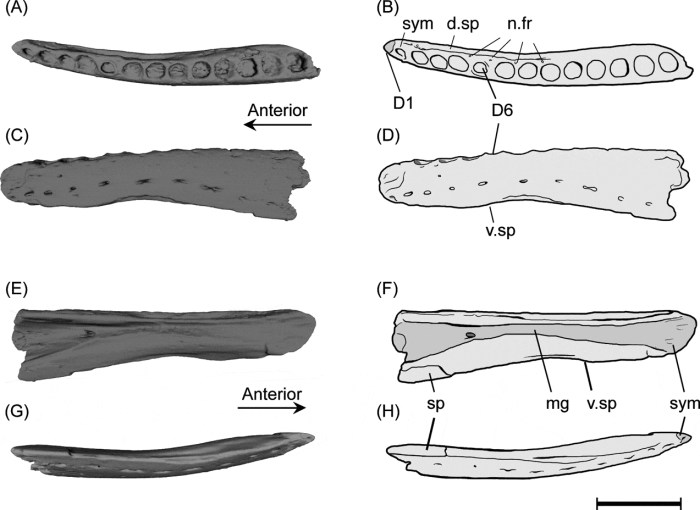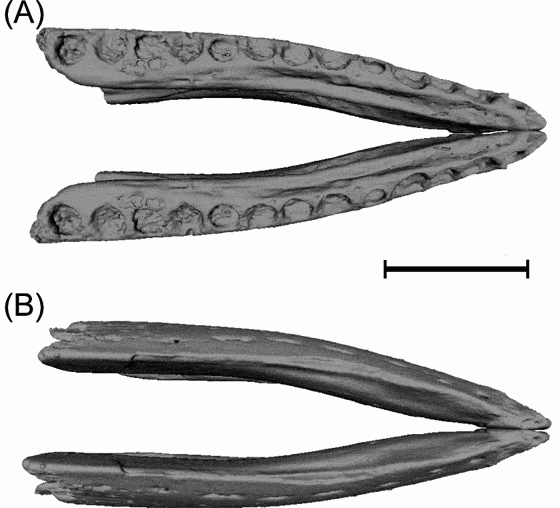New cute croc fossil from the Isle of Skye
It’s raining crocs
We have a new paper out! An international team of researchers, including myself, have published on a new fossil specimen of a crocodile-ancestor (Crocodyliformes). The specimen is around 160 million years old, from the Middle Jurassic of the Isle of Skye in Scotland. It’s Open Access, of course, and available here.
It’s only a tiny, scrappy little fossil, just a lower jaw fragment. But it’s a bit of a weirdo, and the only thing it’s vaguely similar to are things from much later in the geological record. They’re also typically from Europe and North America. This means that the specimen is quite important for our understanding of the geographical and temporal evolution of Crocodyliformes around this time.
It also comes from a time when the fossil record for Crocodyliformes is quite poor. This means we don’t know much about their evolution at this time, so every little fossil counts!

Abstract
The Middle Jurassic is a poorly sampled time interval for non-pelagic neosuchian crocodyliforms, which obscures our understanding of the origin and early evolution of major clades. Here we report a lower jaw from the Middle Jurassic (Bathonian) Duntulm Formation of the Isle of Skye, Scotland, UK, which consists of an isolated and incomplete left dentary and part of the splenial. Morphologically, the Skye specimen closely resembles the Cretaceous neosuchians Pachycheilosuchus and Pietraroiasuchus, in having a proportionally short mandibular symphysis, shallow dentary alveoli and inferred weakly heterodont dentition. It differs from other crocodyliforms in that the Meckelian canal is dorsoventrally expanded posterior to the mandibular symphysis and drastically constricted at the 7th alveolus. The new specimen, together with the presence of Theriosuchus sp. from the Valtos Formation and indeterminate neosuchians from the Kilmaluag Formation, indicates the presence of a previously unrecognised, diverse crocodyliform fauna in the Middle Jurassic of Skye, and Europe more generally. Small-bodied neosuchians were present, and ecologically and taxonomically diverse, in nearshore environments in the Middle Jurassic of the UK.

It’s nothing explosively special, but I’m pretty happy with how everything turned out! I think we also managed to get the most science out of a very small specimen as possible. I’m also very proud of my co-authors for doing such great research, and grateful for being invited to collaborate.
If anyone has any questions on our research, please do go ahead and ask me!
2 thoughts on “New cute croc fossil from the Isle of Skye”